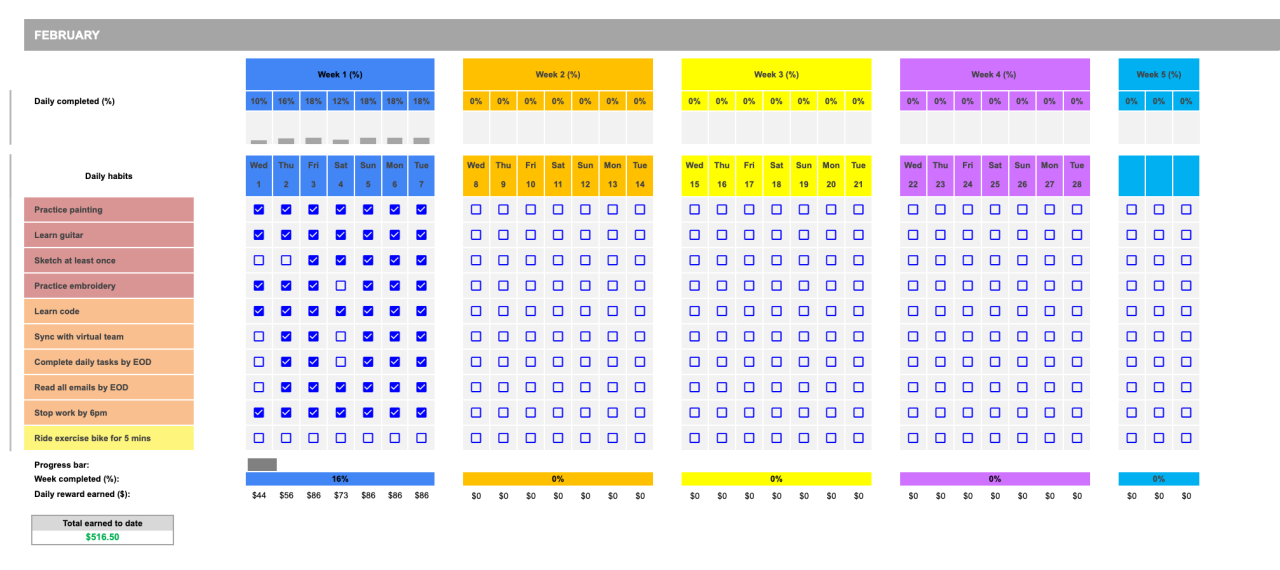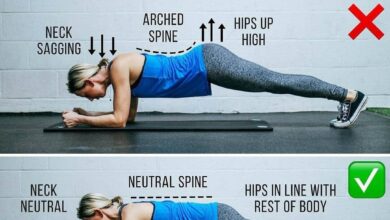
Why Walkers Should Track Their Steps
Why walkers should make it a habit to track steps – Why Walkers Should Track Their Steps: Imagine a world where every step you take contributes to a healthier, more fulfilling life. Step tracking isn’t just about counting numbers; it’s about unlocking your potential and achieving your fitness goals.
By monitoring your daily steps, you gain insights into your activity levels, discover patterns in your movement, and empower yourself to make positive changes. Whether you’re a seasoned walker or just starting out, step tracking offers a unique opportunity to enhance your well-being and reach new milestones.
Step tracking provides valuable data that can be used to assess your progress, set realistic goals, and make informed decisions about your health. It’s like having a personal coach in your pocket, guiding you towards a more active and vibrant lifestyle.
So, lace up your shoes, grab your phone or fitness tracker, and embark on a journey of self-discovery through the power of step tracking.
Tracking Methods and Tools
Tracking your steps is a simple yet effective way to monitor your physical activity and encourage a more active lifestyle. Thankfully, numerous methods and tools are available to help you track your steps, making it easier than ever to stay on top of your fitness goals.
Step Tracking Devices
Step tracking devices play a crucial role in helping individuals monitor their daily activity levels. These devices come in various forms, each with its own set of features and functionalities. Here’s a closer look at some popular step tracking devices:
- Pedometers:These small, inexpensive devices are designed specifically for step counting. They typically clip onto your belt or waistband and use a built-in accelerometer to detect movement. While basic pedometers may only track steps, some models offer additional features like distance, calories burned, and time spent active.
- Fitness Trackers:These wrist-worn devices are more advanced than pedometers, offering a wider range of features. They often include step counting, heart rate monitoring, sleep tracking, GPS, and smartphone notifications. Popular examples include Fitbit, Garmin, and Apple Watch.
- Smartphone Apps:Many smartphone apps are designed to track steps without requiring additional hardware. These apps utilize your phone’s built-in accelerometer to detect movement and count steps. Some popular step tracking apps include Google Fit, MyFitnessPal, and Samsung Health.
Comparing Step Tracking Devices
Each step tracking device has its own strengths and weaknesses, making it important to consider your individual needs and preferences before choosing one. Here’s a comparison of the features and functionalities of various step tracking devices:
| Feature | Pedometers | Fitness Trackers | Smartphone Apps |
|---|---|---|---|
| Step Counting | Yes | Yes | Yes |
| Heart Rate Monitoring | No | Yes (some models) | Yes (some apps) |
| Sleep Tracking | No | Yes (some models) | Yes (some apps) |
| GPS | No | Yes (some models) | Yes (some apps) |
| Smartphone Notifications | No | Yes (some models) | Yes (some apps) |
| Water Intake Tracking | No | Yes (some models) | Yes (some apps) |
| Cost | Low | Medium to High | Free or Subscription-Based |
Accuracy and Reliability of Step Tracking Methods
The accuracy and reliability of step tracking methods can vary depending on the device and individual factors. Here’s a discussion of the accuracy of different tracking methods:
- Pedometers:Pedometers are generally considered to be quite accurate in counting steps, especially when worn correctly. However, they may not be as accurate in detecting other types of movement, such as running or swimming.
- Fitness Trackers:Fitness trackers are generally more accurate than pedometers, especially when it comes to tracking distance and calories burned. However, their accuracy can be affected by factors such as wrist movement and the type of activity being performed.
- Smartphone Apps:Smartphone apps can be less accurate than dedicated step tracking devices, especially when your phone is in your pocket or bag. The accuracy of these apps can also be affected by the sensitivity of the phone’s accelerometer.
Step Tracking Apps: Pros and Cons
Step tracking apps offer a convenient and accessible way to monitor your activity levels. Here’s a table showcasing the pros and cons of popular step tracking apps:
| App | Pros | Cons |
|---|---|---|
| Google Fit | Free, integrates with other Google services, provides personalized insights | Limited social features, may not be as feature-rich as other apps |
| MyFitnessPal | Comprehensive calorie tracking, social features, integrates with other fitness apps | Can be overwhelming for beginners, subscription required for premium features |
| Samsung Health | Integrates with Samsung devices, offers a wide range of health tracking features | May not be compatible with non-Samsung devices, limited social features |
Step Tracking in Daily Life

Step tracking is not just about counting steps; it’s about making small, consistent changes to your daily routine that add up to a healthier lifestyle. By integrating step tracking into your daily life, you can transform your approach to fitness and well-being.
Tracking your steps is a great way to stay motivated and see your progress as a walker. But it’s also important to be mindful of what you’re fueling your body with, especially if you’re aiming to burn calories and improve your fitness.
If you’re not sure how to judge your portion sizes, check out this helpful article on 7 portion size mistakes you’re probably making. By making smart food choices, you can optimize your workouts and get the most out of your walking routine.
Incorporating Steps into Daily Routines, Why walkers should make it a habit to track steps
Step tracking can be seamlessly woven into your everyday activities, making it an effortless way to boost your activity levels. It’s about finding opportunities to move more throughout your day, even during mundane tasks.
Tracking your steps is a great way to stay motivated and see progress, especially if you’re looking to increase your activity levels. It can also help you understand how your daily movement contributes to your overall calorie burn. If you’re an athlete looking to lose weight, you might want to consider strategies like calorie cutting for athletes looking to lose weight , but remember that maintaining a healthy lifestyle includes both diet and exercise.
By tracking your steps, you can get a better picture of your activity levels and make informed decisions about your fitness journey.
- Take the stairs instead of the elevator.This simple switch can add a significant number of steps to your day.
- Park further away from your destination.This encourages you to walk a little extra, even for short errands.
- Walk during phone calls.If you have a long phone conversation, use it as an opportunity to walk around.
- Get up and move during breaks at work.Instead of sitting at your desk, take a quick walk around the office or go for a short walk outside.
Incorporating Steps into a Typical Workday
Step tracking can be a powerful tool for incorporating more movement into your workday.
Tracking your steps is a great way to stay motivated and see your progress as a walker. But if you’re looking to take your fitness to the next level, consider incorporating a core strengthening routine like the 21 day strong abs program.
A strong core will not only improve your posture and balance, but it will also make your walks more efficient and enjoyable.
- Set step goals for each hour.This can help you stay motivated and track your progress throughout the day.
- Schedule walking meetings.If possible, hold meetings while walking around the office or outdoors.
- Take walking breaks throughout the day.Even a short walk can help to improve your energy levels and focus.
- Use a standing desk.Standing desks can help you burn more calories and improve your posture.
Incorporating Steps into Leisure Activities
Step tracking can be an enjoyable way to stay active during your leisure time.
- Go for walks in nature.Explore parks, trails, or your neighborhood.
- Take dance classes.Dancing is a fun and effective way to get your heart rate up and increase your step count.
- Play outdoor games with friends or family.Activities like frisbee, volleyball, or badminton are great for getting in some steps.
- Visit a museum or art gallery.Walking through exhibits can be a great way to get some steps in while enjoying cultural experiences.
Challenges of Maintaining a Consistent Step Tracking Habit
While step tracking offers numerous benefits, maintaining consistency can be challenging.
- Lack of motivation.It can be difficult to stay motivated to track your steps every day, especially if you don’t see immediate results.
- Time constraints.Busy schedules can make it hard to find time for extra walking.
- Weather conditions.Inclement weather can make it difficult to get outside for walks.
- Boredom or lack of variety.Sticking to the same routine can lead to boredom and make it less likely to stick with step tracking.
Step Tracking for Specific Goals: Why Walkers Should Make It A Habit To Track Steps
Step tracking can be a valuable tool for achieving a wide range of fitness goals, from weight loss to muscle gain and even injury rehabilitation. By monitoring your daily step count, you gain insights into your activity levels and can make informed decisions to adjust your routines for optimal results.
Step Tracking for Weight Loss
Tracking steps can be a powerful tool for weight loss by increasing your overall calorie expenditure. Walking is a low-impact exercise that can be easily incorporated into your daily routine, and increasing your step count can lead to significant calorie burn over time.
- Setting Realistic Step Goals:Start by setting achievable step goals, gradually increasing them as you get fitter. Aim for at least 10,000 steps per day for weight loss, although this can vary depending on your individual needs and fitness level.
- Tracking Progress and Adjustments:Regularly monitor your step count and make adjustments to your daily routine as needed. If you’re not meeting your goals, consider adding more walking opportunities into your day, such as taking the stairs instead of the elevator or walking during your lunch break.
- Combining with Other Activities:Step tracking can be combined with other forms of exercise, such as running, swimming, or cycling, to maximize calorie burn and weight loss results.
Step Tracking for Muscle Gain
While step tracking is primarily associated with cardiovascular fitness, it can also play a role in muscle gain by supporting overall activity levels and promoting recovery.
- Post-Workout Recovery:Walking after a strength training session can help improve blood flow and reduce muscle soreness, aiding in muscle recovery and growth.
- Maintaining Activity Levels:Tracking steps can encourage you to stay active throughout the day, even on rest days, which can contribute to overall muscle mass maintenance.
Step Tracking for Injury Rehabilitation
Step tracking can be a valuable tool for rehabilitation after an injury, helping you gradually increase your activity levels and monitor your progress.
- Gradual Progression:Start with a low step count and gradually increase it as your body heals, avoiding overexertion. Step tracking allows you to track your progress and adjust your activity levels accordingly.
- Monitoring Pain Levels:Pay attention to any pain or discomfort you experience during walking. If you feel pain, reduce your step count and consult with your healthcare provider.
- Motivational Tool:Seeing your step count increase can be a source of motivation as you progress through your rehabilitation journey.
Step Tracking for Athletic Events
Step tracking can be an invaluable tool for athletes preparing for events, helping them monitor their training progress and ensure they’re reaching their peak performance levels.
- Training Volume:Tracking steps can help athletes monitor their training volume and ensure they’re getting enough exercise to improve their endurance and performance.
- Recovery Monitoring:Step tracking can help athletes monitor their recovery levels, ensuring they’re not overtraining and allowing their bodies adequate time to rest and repair.
- Race Day Preparation:Tracking steps can help athletes prepare for race day by simulating race conditions and ensuring they’re physically and mentally ready for the challenge.
Step Tracking Strategies for Different Fitness Goals
| Fitness Goal | Step Tracking Strategy | Example |
|---|---|---|
| Weight Loss | Set a daily step goal of 10,000 or more, gradually increasing as you get fitter. Track your progress and adjust your routine accordingly. | A person aiming to lose weight might set a daily step goal of 10,000 steps and track their progress using a fitness tracker. If they consistently fall short of their goal, they might consider taking the stairs instead of the elevator or walking during their lunch break. |
| Muscle Gain | Track steps to ensure you’re staying active and promoting recovery after strength training sessions. | An athlete aiming to gain muscle might track their steps to ensure they’re walking for at least 30 minutes after their strength training workouts, promoting blood flow and muscle recovery. |
| Injury Rehabilitation | Start with a low step count and gradually increase it as your body heals, monitoring your progress and adjusting your activity levels accordingly. | A person recovering from a knee injury might start with a daily step goal of 5,000 steps and gradually increase it to 10,000 steps over several weeks, monitoring their pain levels and adjusting their activity levels accordingly. |
| Athletic Events | Track steps to monitor training volume, recovery levels, and prepare for race day by simulating race conditions. | A marathon runner might track their steps to ensure they’re running at least 40 miles per week in the weeks leading up to the race, and they might simulate race conditions by running a long run on the weekend before the race. |
Wrap-Up

Incorporating step tracking into your daily routine is a simple yet powerful way to unlock a world of benefits. It empowers you to be more mindful of your activity levels, set achievable goals, and celebrate your progress along the way.
Whether you’re striving for weight loss, improved cardiovascular health, or simply a more active lifestyle, step tracking provides the tools and motivation to achieve your aspirations. So, take charge of your health, embrace the journey, and let every step you take count.






